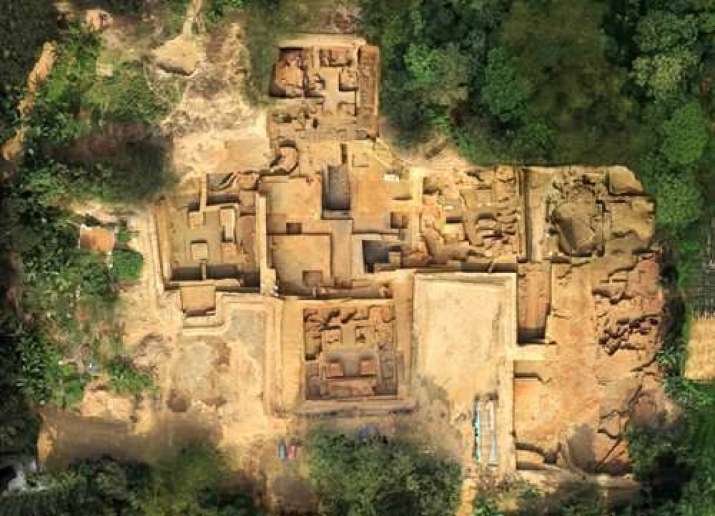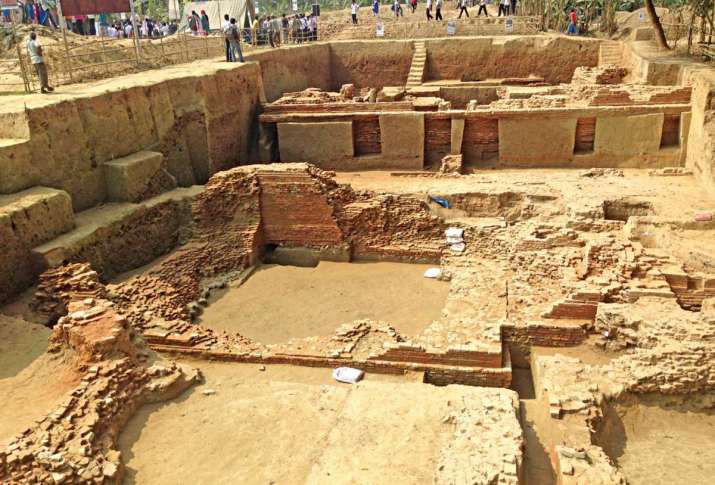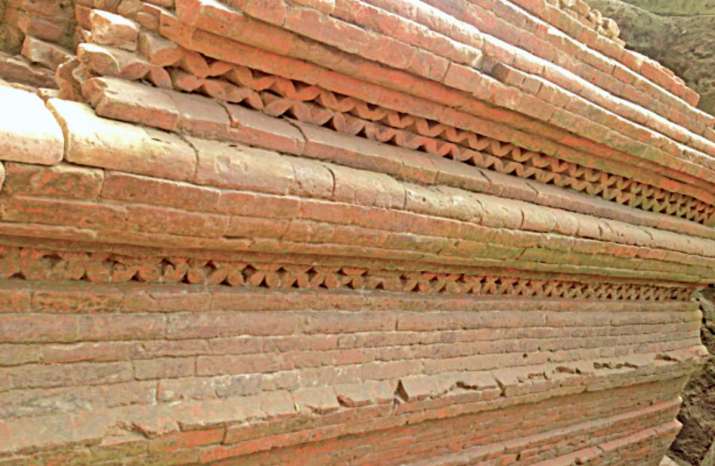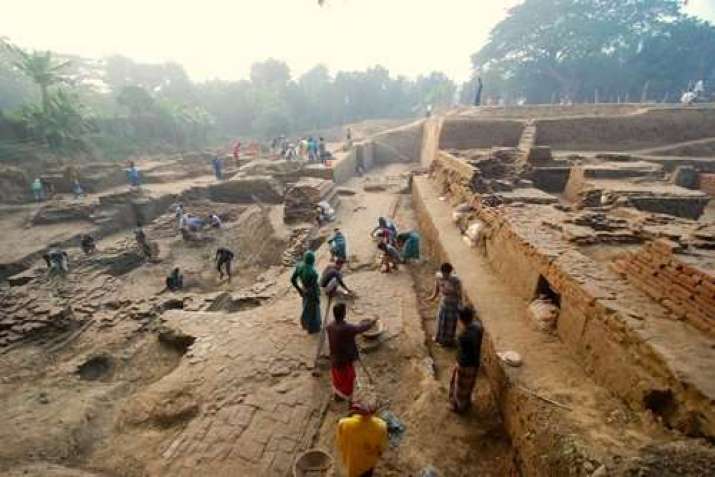NEWS
Excavation in Bangladesh Reveals 1,000-year-old Buddhist City
 An aerial view of the excavation site. From globaltimes.cn
An aerial view of the excavation site. From globaltimes.cnA team of archaeologists from China and Bangladesh have announced the results of a joint four-year excavation of the Vikrampur Ruins, an archeological dig near the Bangladeshi capital Dhaka. Historians believe the ruins to be the remains of the ancient city of Vikrampur, formerly a major Buddhist center with strong ties to the renowned Bengali Buddhist master Atisha.
The historic ruins in Bangladesh’s Munshiganj District, served variously as the capital of the Chandra (900–1050), Varman (1080–1150) and Sena (1070–1230) dynasties, according to researchers. Notable finds at the site include an entrance and walkway, prayer hall, mortar floor, octagonal stupas, pot shards, baked clay artifacts, and burnt bricks.
“The most important find was the excavation of two building ruins, a stupa courtyard and a vihara [monastery] dating from around 780–950,” explained Guo Weimin, director of the Institute of Cultural Relics and Archaeology of Hunan Province. (Global Times)
Researchers believe the Buddhist ruins have direct links to the great Buddhist teacher Atisha Dipaṃkara Srijnana (980–1054), who was born in the area. “From the 7th–9th century, when the Indian subcontinent was at its most prosperous, this place was the capital of east India. It was also where Atisha got his start before he went to Tibet and became the forefather of the Kadam school of Tibetan Buddhism,” said Guo. (Global Times)
 The remains of a Buddhist vihara discovered at the site. From thedailystar.net
The remains of a Buddhist vihara discovered at the site. From thedailystar.netAtisha was a Bengali Buddhist master who is recognized as one of the greatest figures from the classical Buddhist era. He was instrumental in the spread of Buddhism in 11th century Asia and inspired Buddhist thought from Sumatra, where he lived for 12 years, to Tibet, where he spent the last 10 years of his life. Atisha’s foremost disciple Dromton Gyelwe Jungne (1004 or 1005–1064) went on to found of the Kadam school of Tibetan Buddhism and in 1056 established Reting Monastery near Lhasa.
Archaeologists on the project have expressed hope that the findings will offer new insights into the history of Buddhism in the region and the life of Atisha. The ruins represent one of the last Buddhist complexes in the Indian subcontinent to be destroyed when Islam rose to dominance in the area from the 13th–16th centuries.
“In 1204, [the] Turkic general Ikhtiar Uddin Muhammad Bakhtiyar Khilji defeated Lakshmana Sena [a ruler from the Sena dynasty (r.1178–1206)]. He then started his Muslim reign the next year,” said Chai Huanbo, leader of the Chinese contingent of the joint excavation team. “When his Muslim army invaded Vikrampur in 1223, almost all the Buddhist monasteries were destroyed to provide bricks and columns for Islamic mosques.” (Global Times)
 From thedailystar.net
From thedailystar.netIn addition to its historical significance, the archaeological project has also served to cement friendly ties between Bangladesh and China.
“This marks the first time that China has collaborated with a country in the Indian subcontinent on an archaeological excavation,” said Guo. “The site is a bridge that has enhanced cultural exchanges and the friendly relationship between China and Bangladesh. Through this excavation, we have been imparting our archaeological knowledge and experience to Bangladesh,” (Global Times)
“The excavation was initiated by the Agrashar Vikrampur Foundation in Bangladesh in 2013. They first started off by exploring a 344-square-meter area in the village of Nateshwar in Munshiganj,” Guo explained. “Later, the Ministry of Foreign Affairs in Bangladesh, another sponsor of the project, asked the Chinese embassy in Bangladesh for financial and technical help. Soon after, the Institute of Cultural Relics and Archaeology of Hunan Province was asked to take part in the excavation.” (Global Times)
“Our institution provided a lot more than just technology and experiences, Guo added. “We also brought a spirit of friendship.” (Global Times)
 Archaeologists at work at the Vikrampur Ruins excavation site. From globaltimes.cn
Archaeologists at work at the Vikrampur Ruins excavation site. From globaltimes.cnSee more
China-Bangladesh excavation uncovers the ancient capital of Vikrampur (Global Times)
1000-yr old Buddhist city in Munshiganj (Prothom Alo)
Going back to Atish Dipankar Era (The Daily Star)
Related news from Buddhistdoor Global
British Museum’s Revamped Sir Joseph Hotung Gallery Offers a Fresh Perspective on South Asian Buddhist Art
Pakistan Unveils 1,700-year-old Reclining Buddha Statue at Bhamala Archaeological Site
First exhibition of Gandhara Buddhist Antiquities Opens in South Korea
Ancient Nalanda University Now a UNESCO World Heritage Site
Related features from Buddhistdoor Global
The Untapped Diplomatic Potential of Bangladesh’s Buddhist Heritage
Marginalized and Ignored: The Corrosion of Bangladeshi Minority-Government Relations
A Path to Peace: The Engaged Buddhism of Venerable Tajay Bongsa














